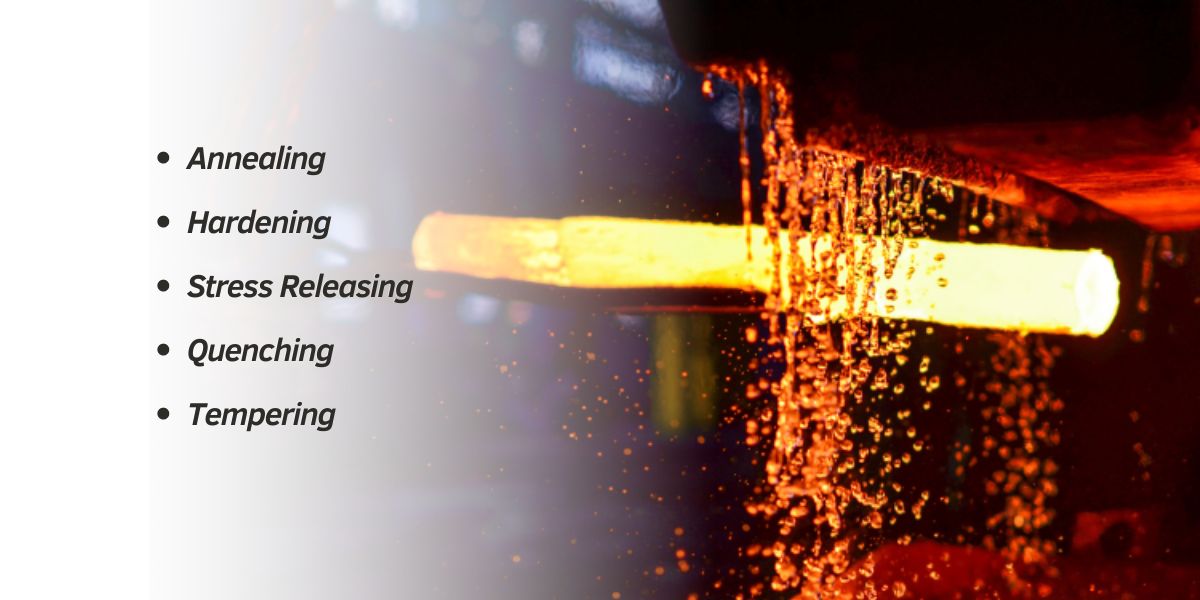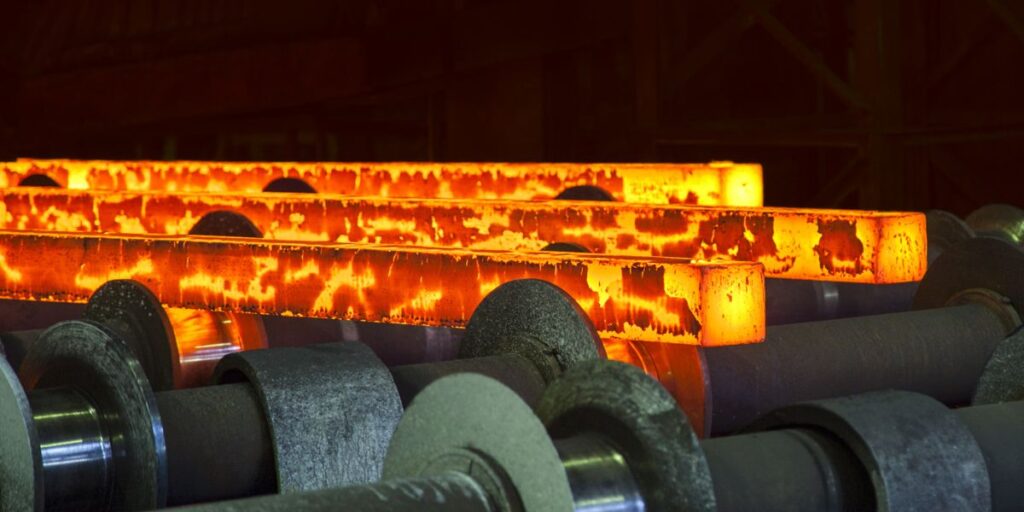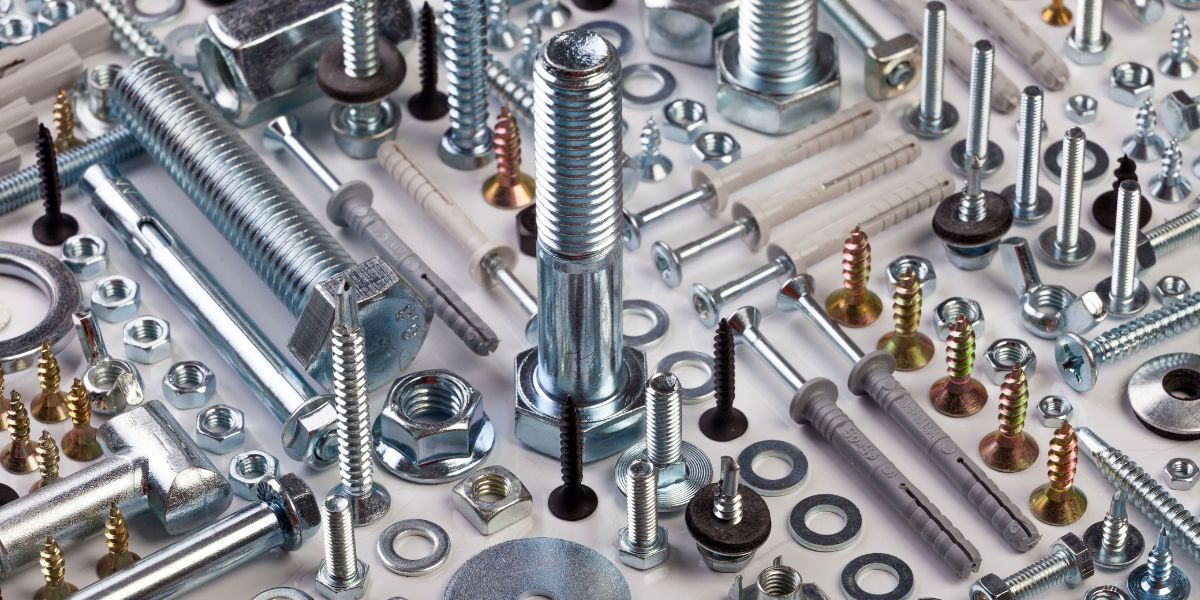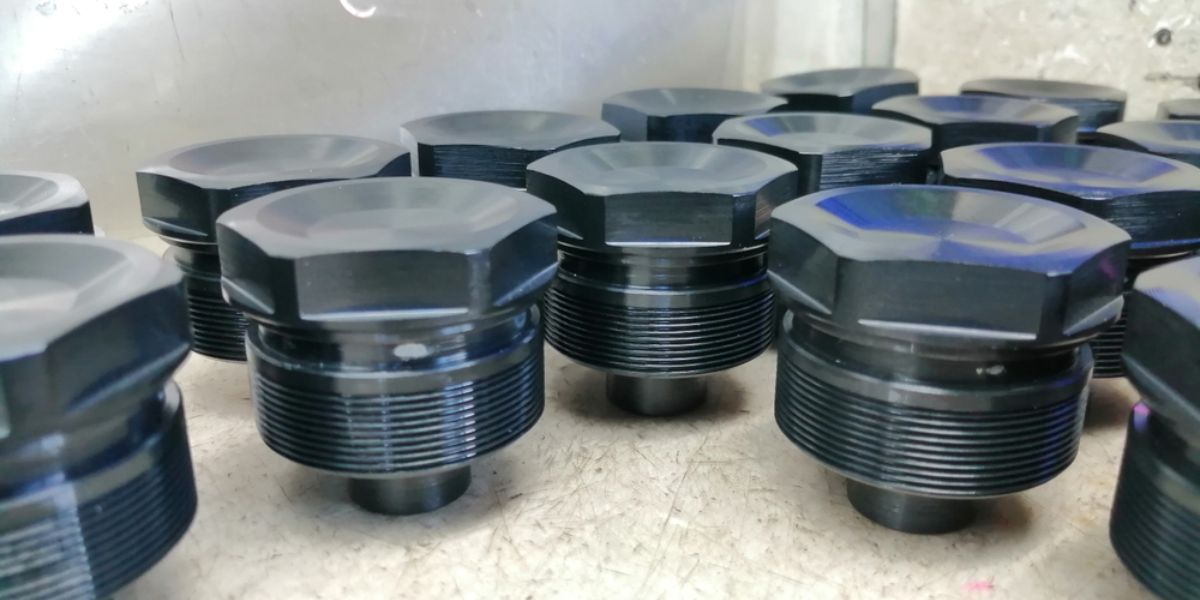Understanding Heat Treatment Methods And Their Benefits
Heat treatment is a common manufacturing procedure adopted by the manufacturing industries to strengthen metals or alter their properties; heat treatment also adds to flexibility and durability. With heat-treating methods, manufacturers alter a metal’s physical and chemical properties, making it more ductile, rigid, and suitable for manufacturing.
The heat treatment process is followed by a cooling treatment that instantly releases heat and internal stress on the metal, making it more stable and durable.
Almost all metals are passed through heat treatment methods to obtain their desired properties. These incredible methods can remove brittleness from metals, make them more rigid, improve their magnetic and electric properties, and make them more eligible for manufacturing processes. Read more about heat treatment types and advantages below.
What Is Heat Treatment?
Anyone new to the concept might wonder what is heat treatment or why it is so popular among manufacturers. To answer that, heat treatment is a prevalent method of exposing metals at high temperatures to obtain their desired properties and cooling to increase their durability. The metals are exposed to high temperatures to alter their microstructure and improve their stability, making them more ductile.
The rapid heating and cooling method reduces the potential stress of casting, reduces their hardness, and makes the metals more sustainable for the manufacturing process. When exposed to metals, heat treatment methods also improve corrosion resistance, aiding manufacturing. Heat treatments are most commonly found in the metallurgy industry, where massive amounts of metals are used in the manufacturing process every day.
How Heat Treatment Works?
A prevalent method adapted to change the chemical and physical properties of metals, heat treatment methods are a three-stage process that involves heating, soaking, and cooling. In the heating stage, the desired metal is exposed to very high temperatures to melt, reduce its rigidness, and increase its ductility.
After achieving the desired properties, the hot metal is soaked to keep it at an appropriate temperature unless it achieves the desired structure or shape. The soaking period is all about how long you can keep the metal at a proper temperature that aids it to go through chemical and physical changes and obtain the desired structure or state.
The final stage is the cooling stage, where the metal is brought back to room temperature through rapid cooling methods. Manufacturers use coolants in the form of liquid or gas to ensure the metal is cooled rapidly but does not lose its obtained properties. The process of cooling makes the metals tougher and reduces the chances of cracks or breaks.
Five Benefits Of Exposing Metals To Heat Treatments
There are numerous benefits of heat treatment methods on metals to count on in manufacturing high tensile fasteners. Let’s find them in detail.
Increased Machinability
The immediate effect of heat treatment on metals is it increased machinability. It becomes easy to cut and shape metals to manufacture desired products. Implementing heat-treating methods helps improve the longevity of metals and makes them suitable for different applications.
More Resistance To Corrosion And Oxidation
In the heat-treating process, metals are exposed to extreme temperatures, making them more durable in harsh conditions. The extreme temperature conditions improve the metal’s chemical properties making them more oxidation and corrosion-resistant.
Increased Stability And Rigidity
Exposing metals to heat treatment methods allows them to withstand wear and tear and makes them tougher, more durable, and more stable. As a result, they become more rigid and stable, and suitable for manufacturing.
Improved Electric And Magnetic Properties
Heat treatments make metals more versatile. The extreme temperature conditions exposed to metals alter their electric and magnetic properties, making them more reliable and efficient.
Modified Microstructure
When metals are exposed to heat-treating methods, they undergo chemical and physical changes. The different temperatures imposed on metals alter their microstructure and improve their physical properties. In this way, it also becomes easy to obtain the metal in the desired form and shape for the manufacturing process.

Various Heat Treatment Methods
Not just one; there are different heat treatment methods to transform metals and increase their durability. The heat-treating technique the manufacturers adopt depends on the type of metal and the desired physical and chemical properties for manufacturing. Here are the best heat-treating methods that have unique properties.
Annealing
The most common heat-treating method, Annealing, involves heating the metal to obtain its desired properties and cooling it slowly. This particular heat-treating method helps modify the microstructure of metals, changing their electrical and mechanical properties and reducing their hardness. Annealing is also used to reduce the internal stress of metals and increase their ductility.
In the annealing method, a suitable temperature is maintained to obtain the desired properties of the metal, and then the metal is cooled down to retain its hardness and stability. This also helps eliminate shrinkage and increases the tolerance and wear resistance of the metal.
Hardening
Manufacturers employ this specific heat treatment method to increase the strength and hardness of the metal. Rapid heating and cooling make the metal more resistant and suitable for manufacturing.
In the hardening method, metals are exposed to extreme temperatures to make them last longer and resist extreme wear and tear. When the desired property of the metal is achieved through excessive heat treatment, the metals are passed through controlled cooling methods that add to their strength, flexibility, and durability.
Stress Releasing
Another popular heat-treating method is stress release, where the metal is passed through high temperatures and then air-cooled to room temperature. This method helps release internal stress and makes the metal hard and durable.
In the stress-releasing process, the heated metals are stress-relieved in temperatures ranging between 500 to 700°C. The temperature is controlled based on their composition and made sure the metal is cooled uniformly. The common methods manufacturers follow to release stress are rolling, smelting, compressing, etc.
Quenching
Quenching is an essential heat treatment step that helps cool the metals rapidly after withstanding extremely high temperatures. Usually, manufacturers use water, cooling oils, brine, or cold air to cool the metal down and retain its properties.
The quenching medium ensures the metal is cooled down rapidly and the desired property is achieved. The quenching method also increases the hardness, wear resistance, and strength of the metal, making it more suitable for different manufacturing processes. Quenching also reduces surface oxidation on metals and increases their corrosion resistance.
Concluding the Benefits of Heat Treatment in Manufacturing
Heat-treating plays a crucial role in boosting the properties of metals, making them more suitable for different manufacturing processes. Reliable auto and precision components manufacturers use heat-treating methods with adequate measures to ensure the final product is of the highest quality.
Trusted auto component manufacturers like Bhansali Techno Components ensure that heat-treating methods are carried out carefully, leading to unlocking the full potential of metals. Choose a reliable manufacturer today to obtain the best-quality metal components for your business.





